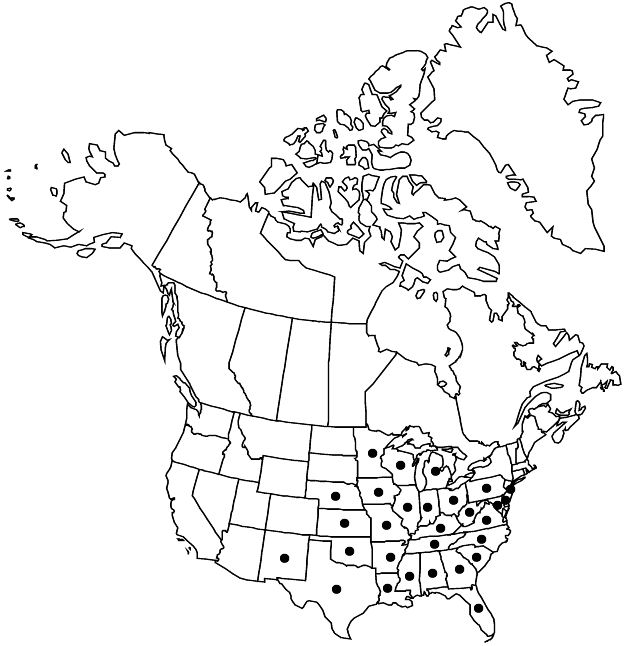Difference between revisions of "Croton glandulosus"
Syst. Nat. ed. 10, 2: 1275. 1759.
FNA>Volume Importer |
FNA>Volume Importer |
||
| Line 12: | Line 12: | ||
|name=Decarinium glandulosum | |name=Decarinium glandulosum | ||
|authority=(Linnaeus) Rafinesque | |authority=(Linnaeus) Rafinesque | ||
| − | }}{{Treatment/ID/Synonym | + | }} {{Treatment/ID/Synonym |
|name=Geiseleria glandulosa | |name=Geiseleria glandulosa | ||
|authority=(Linnaeus) Klotzsch | |authority=(Linnaeus) Klotzsch | ||
| − | }}{{Treatment/ID/Synonym | + | }} {{Treatment/ID/Synonym |
|name=Oxydectes glandulosa | |name=Oxydectes glandulosa | ||
|authority=(Linnaeus) Kuntze | |authority=(Linnaeus) Kuntze | ||
| Line 31: | Line 31: | ||
|distribution=United States;Mexico;West Indies;Central America;South America. | |distribution=United States;Mexico;West Indies;Central America;South America. | ||
|discussion=<p>Varieties ca. 20 (5 in the flora).</p><!-- | |discussion=<p>Varieties ca. 20 (5 in the flora).</p><!-- | ||
| − | --><p>Croton glandulosus is widespread in the New World, with a complex pattern of variation. The classification here follows B. W. van Ee et al. (2009).</p> | + | --><p><i>Croton glandulosus</i> is widespread in the New World, with a complex pattern of variation. The classification here follows B. W. van Ee et al. (2009).</p> |
|tables= | |tables= | ||
|references= | |references= | ||
| Line 106: | Line 106: | ||
|publication year=1759 | |publication year=1759 | ||
|special status= | |special status= | ||
| − | |source xml=https://jpend@bitbucket.org/aafc-mbb/fna-data-curation.git/src/ | + | |source xml=https://jpend@bitbucket.org/aafc-mbb/fna-data-curation.git/src/8f726806613d60c220dc4493de13607dd3150896/coarse_grained_fna_xml/V12/V12_821.xml |
|genus=Croton | |genus=Croton | ||
|species=Croton glandulosus | |species=Croton glandulosus | ||
Revision as of 15:50, 18 September 2019
Herbs, annual, 1–12 dm, monoecious. Stems much branched distally, usually coarsely stellate-hairy, rarely glabrescent. Leaves not clustered; stipules linear-subulate, glandular or not, to 0.5 mm or absent; petiole 0.2–1 cm, glands at apex 2, yellow, sessile to shortly stipitate, cuplike; blade ovate proximally, oblong-lanceolate distally, 0.6–3.5(–7) × 0.3–1.5(–3) cm, base obtuse to truncate, margins coarsely crenate to serrate-dentate, apex obtuse to rounded, both surfaces green, stellate-hairy, glabrate, or rarely glabrous. Inflorescences bisexual, racemes, 1–3 cm, staminate flowers 10–20, pistillate flowers 1–4. Pedicels: staminate 0.8–2 mm, pistillate 0–5 mm. Staminate flowers: sepals 5, 0.8–1.2 mm, abaxial surface stellate-hairy; petals 5, oblanceolate, 1–1.3 mm, abaxial surface glabrous except margins ciliate; stamens 7–13. Pistillate flowers: sepals 5, subequal, 6–7.5 mm, margins entire, apex straight to slightly incurved, abaxial surface glabrous except stellate-hairy apically; petals 0 or 5, rudimentary; ovary 3-locular; styles 3, 1–2.5 mm, deeply 2-fid, terminal segments 6. Capsules 3.5–6 × 4–5 mm, smooth; columella 3-angled. Seeds 3–4 × 2–2.5 mm, shiny. 2n = 16.
Distribution

United States, Mexico, West Indies, Central America, South America.
Discussion
Varieties ca. 20 (5 in the flora).
Croton glandulosus is widespread in the New World, with a complex pattern of variation. The classification here follows B. W. van Ee et al. (2009).
Selected References
None.
Lower Taxa
Key
| 1 | Leaf blades glabrate or sparsely to moderately stellate-hairy. | > 2 |
| 2 | Plants 2–12 dm; leaf blades 2–7 cm. | Croton glandulosus var. septentrionalis |
| 2 | Plants 1–2 dm; leaf blades 0.6–2(–3) cm. | > 3 |
| 3 | Leaf blades glabrate, bases markedly 3-veined; petiole apical glands sessile; Florida. | Croton glandulosus var. floridanus |
| 3 | Leaf blades sparsely stellate-hairy, bases obscurely 3-veined; petiole apical glands stipitate; Kansas, New Mexico, Oklahoma, Texas. | Croton glandulosus var. lindheimeri |
| 1 | Leaf blades moderately to densely stellate-hairy. | > 4 |
| 4 | Leaf blades firm-thick, length mostly 2 times width or less, marginal teeth rounded; petiole apical glands sessile. | Croton glandulosus var. arenicola |
| 4 | Leaf blades membranous, length mostly more than 2 times width, marginal teeth pointed; petiole apical glands sessile or stipitate. | > 5 |
| 5 | Leaf blades 1–2(–3) × 0.3–0.8(–1.3) cm; petiole apical glands stipitate, circular when dry, 0.1–0.4 mm diam. | Croton glandulosus var. lindheimeri |
| 5 | Leaf blades 2–7 × 0.7–3 cm; petiole apical glands sessile, wavy-wrinkled when dry, 0.5–0.8 mm diam. | > 6 |
| 6 | Stems densely stellate-hairy, hairs spreading, radii unequal; leaf blades densely stellate-villous. | Croton glandulosus var. pubentissimus |
| 6 | Stems moderately stellate-hairy, hairs appressed, radii equal; leaf blades moderately stellate-hairy. | Croton glandulosus var. septentrionalis |